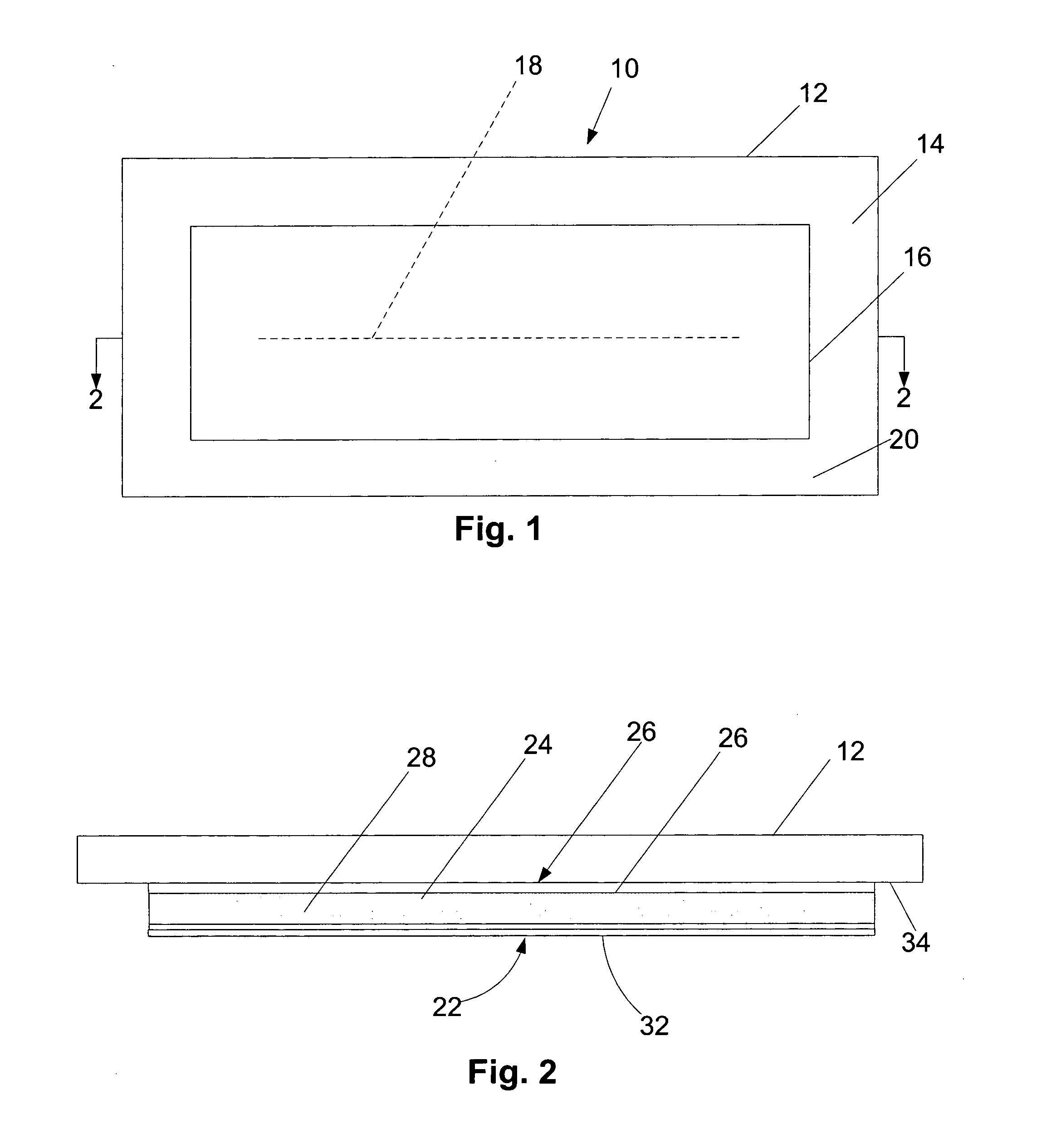Analgesic patch for sports injury rehabilitation medicine and method to alleviate pain
a technology of sports injury and rehabilitation medicine, applied in the field oftopical patches, can solve the problems of inability to recognize and evaluate risks, underdeveloped coordination, and athletic equipment that malfunctions or is used incorrectly
- Summary
- Abstract
- Description
- Claims
- Application Information
AI Technical Summary
Problems solved by technology
Method used
Image
Examples
example 1
Treatment of Sports Injury
[0098] Exemplary use of the present invention is described in a 63 year-old white male avid tennis player complaining of pain in the right shoulder and right lateral thigh with radiation. The pain was aggravated by repetitive sports activity e.g., tennis competition three times per week especially, “service motion”. Prior treatment history included cortisone injection into the pain “trigger zone” with temporary relief for 4 to 6 weeks. The pain caused sleep disturbance and, because of NSAID aggravated gastric irritation, the patient was prescribed Tylenol #3 at bedtime. Patient alleges the pain recurs between 2-3 AM, preventing the return to restful sleep. Examination revealed point tenderness in the right posterior rotator cuff and right lateral femoral tuberosity and facial tract. The diagnosis included right rotator cuff tendonitis and right lateral fasciaitis. The trigger points reproduced the painful symptoms.
[0099] Initial treatment with a new thera...
example 2
Preparation of Prototypical Matrix Type 20% Lidocaine Patch
[0100] An adhesive matrix comprising a mixture of lidocaine in acrylate polymer adhesive is prepared in the following manner. About 60 g acrylate polymer (Durotak® 387-2052) and about 50 g lidocaine are dissolved in ethyl acetate. The concentration of lidocaine is about 15 wt / wt percent wet weight. The local-anesthetic component of the patch is then prepared by completely coating a 75 μm polyester film backing with the lidocaine acrylate matrix using a Warner Mathis thickness coater. The thickness of the wet film is about 270 μm. The coated film is dried at a rate of about three feet per minute through a 9 foot temperature zone at a temperature gradient of about 60° C. to about 90° C. in a KTF oven to evaporate the ethyl acetate yielding the local-anesthetic component. The dry adhesive lidocaine matrix film has a thickness of about 160 μm and the lidocaine concentration is about 20 wt / wt percent dry weight. The dry film is ...
PUM
| Property | Measurement | Unit |
|---|---|---|
| Permeability | aaaaa | aaaaa |
| Hydrophilicity | aaaaa | aaaaa |
Abstract
Description
Claims
Application Information
 Login to View More
Login to View More - R&D
- Intellectual Property
- Life Sciences
- Materials
- Tech Scout
- Unparalleled Data Quality
- Higher Quality Content
- 60% Fewer Hallucinations
Browse by: Latest US Patents, China's latest patents, Technical Efficacy Thesaurus, Application Domain, Technology Topic, Popular Technical Reports.
© 2025 PatSnap. All rights reserved.Legal|Privacy policy|Modern Slavery Act Transparency Statement|Sitemap|About US| Contact US: help@patsnap.com

